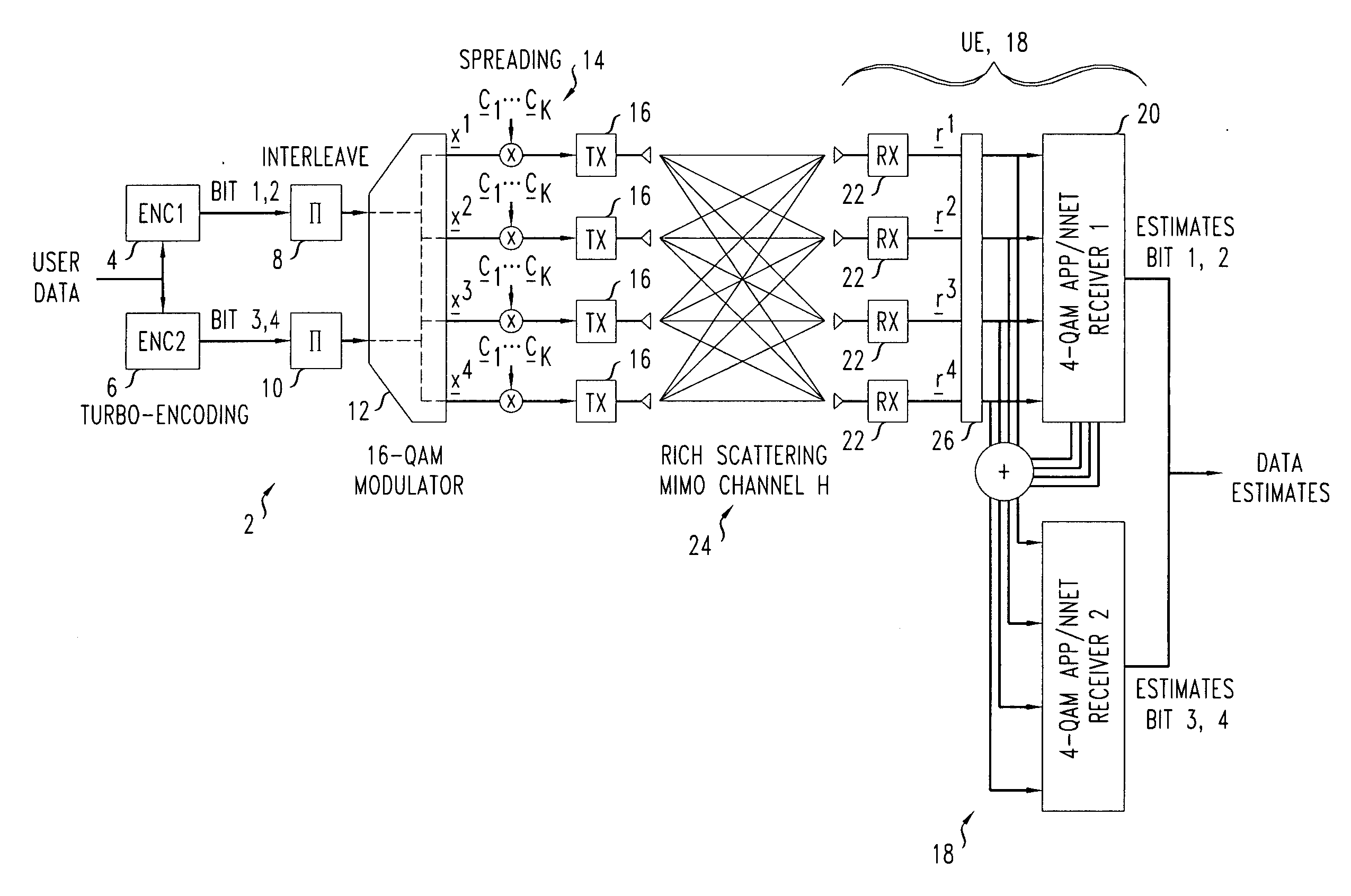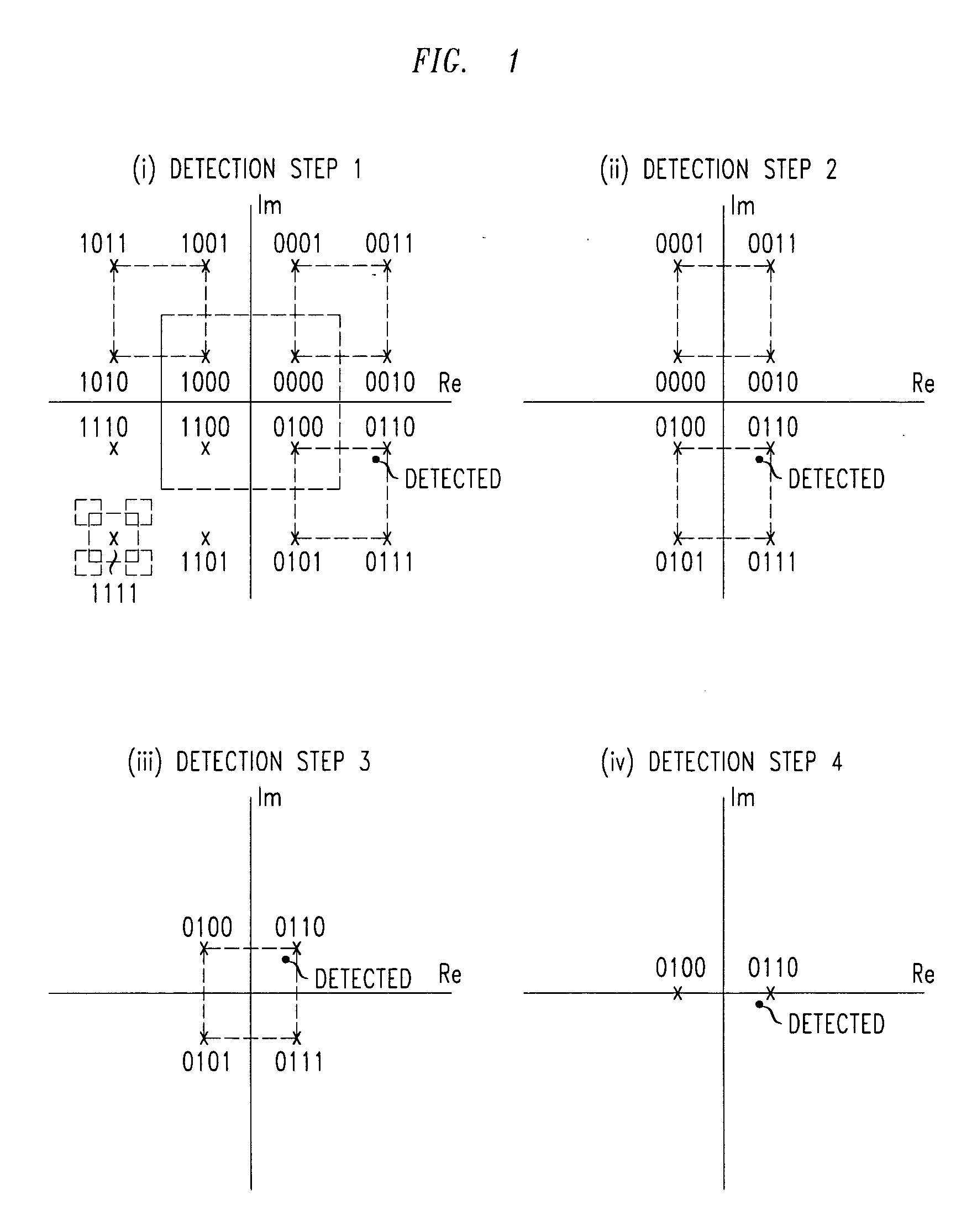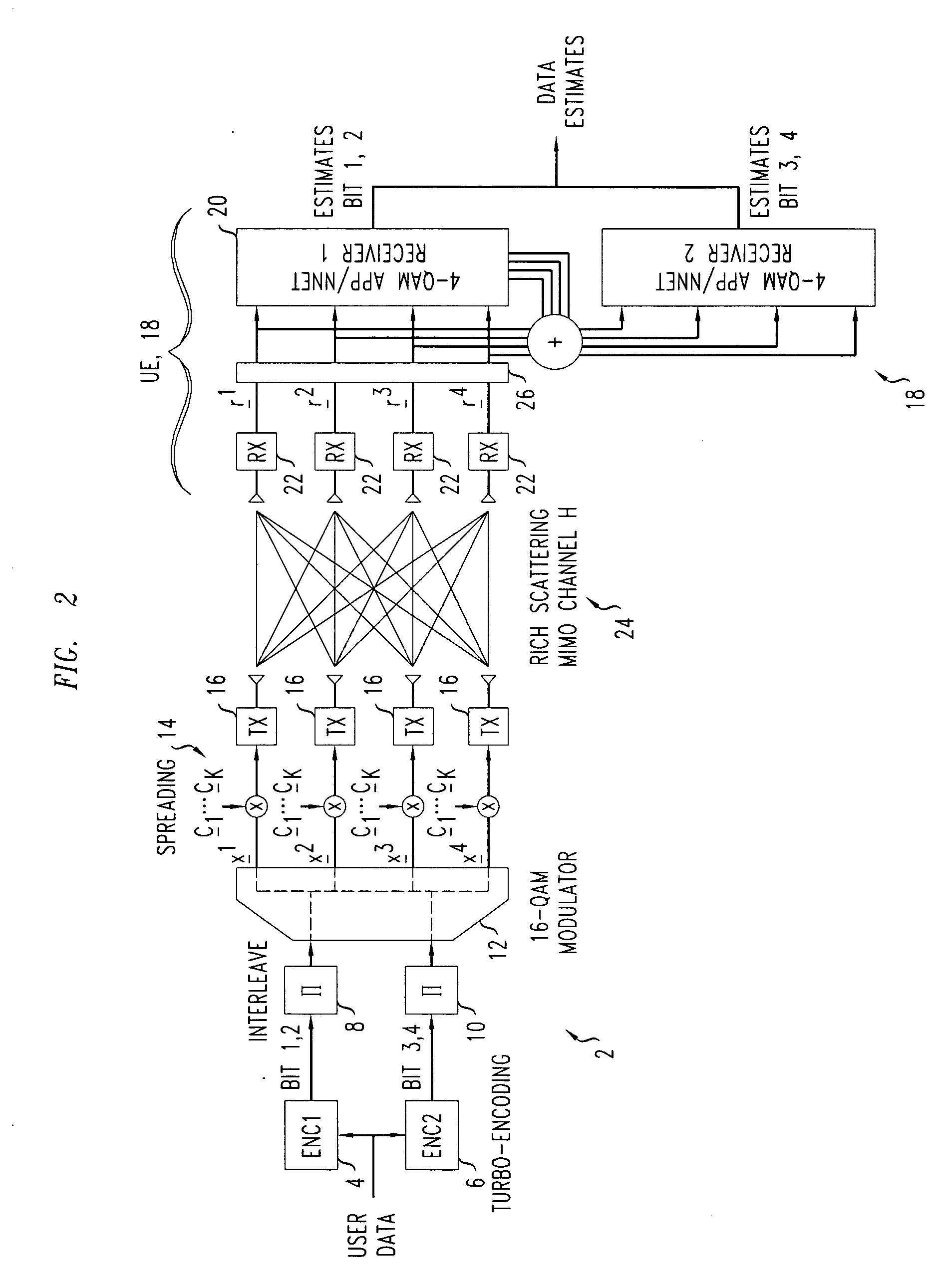Modulation in a mobile telecommunications system
a mobile telecommunications system and module technology, applied in the field of mobile telecommunications, can solve the problems of ms-ppic detector, high interference levels at the mobile receiver, and the loss of performance of known mimo receivers, and achieve the effect of low computational complexity and performance loss
- Summary
- Abstract
- Description
- Claims
- Application Information
AI Technical Summary
Benefits of technology
Problems solved by technology
Method used
Image
Examples
Embodiment Construction
[0020] In a 4 Quadrature Amplitude Modulation or 4 Quadrature Phase Shift Keying modulation scheme, bits corresponding to each symbol are allocated the same amount of energy and are therefore given the same amount of protection by the modulation scheme. In higher order modulation schemes such as 16-QAM, 64-QAM or 256-QAM, the modulated bits are not equally protected. The inventors realised that this fact can be made use of to introduce a layered encoding scheme, whereby bits which are given equivalent protection by the modulation scheme are encoded together in one block.
[0021] This allows us to first detect and decode the bit blocks which are well-protected by the modulation scheme, and subsequently subtract their contribution from the received signal in order to reduce the interference for the remaining less-protected bit blocks.
[0022] In this way, the received 16 / 64 / 256-QAM modulated signal can be treated as the sum of separately encoded 4-QAM data-streams which can be detected ...
PUM
 Login to View More
Login to View More Abstract
Description
Claims
Application Information
 Login to View More
Login to View More - R&D
- Intellectual Property
- Life Sciences
- Materials
- Tech Scout
- Unparalleled Data Quality
- Higher Quality Content
- 60% Fewer Hallucinations
Browse by: Latest US Patents, China's latest patents, Technical Efficacy Thesaurus, Application Domain, Technology Topic, Popular Technical Reports.
© 2025 PatSnap. All rights reserved.Legal|Privacy policy|Modern Slavery Act Transparency Statement|Sitemap|About US| Contact US: help@patsnap.com



